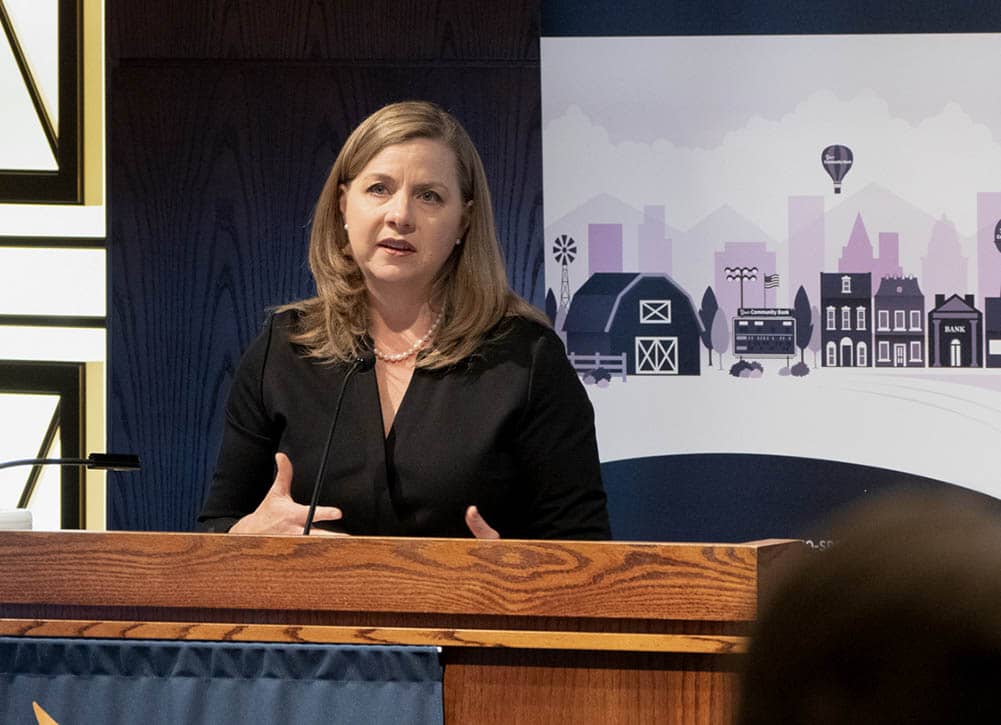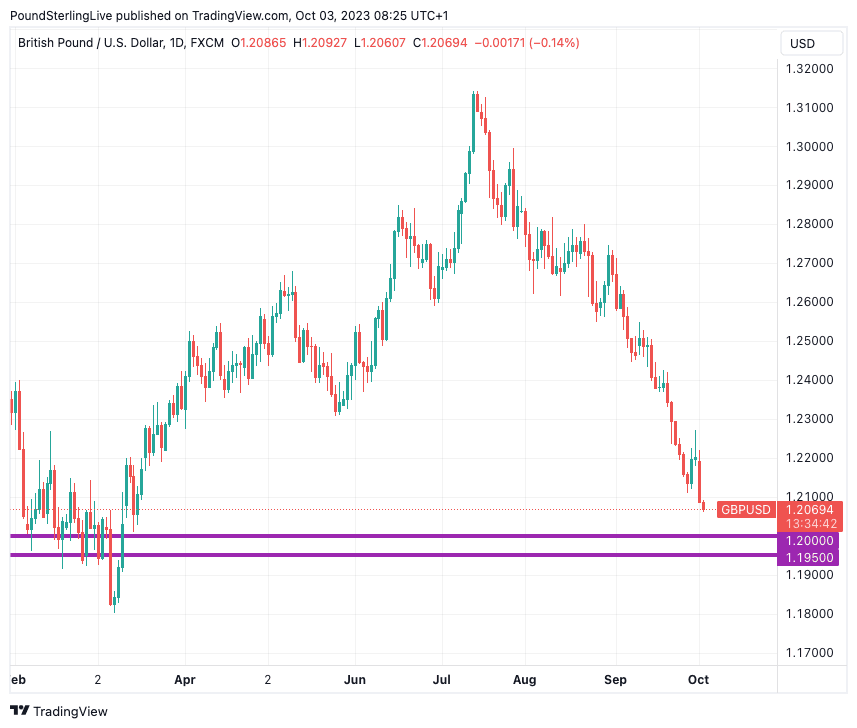GBP/USD Exchange Rate Approaches 1.20
- Written by: Gary Howes
-

Above: USD performance over the course of the past five trading days.
The Pound to Dollar exchange rate (GBPUSD) is closing in on the psychologically significant 1.20 level, but the next notable source of support is to be found in the 1.19s according to one analyst we follow.
Sterling, Euro and the majority of G10 currencies are back under pressure against the U.S. Dollar which has benefited from a fresh deterioration in investor sentiment amidst rising U.S. and global bond yields.
"GBP/USD is trading near 1.2050," says Carol Kong, a strategist at Commonwealth Bank. "GBP/USD can continue on its downward trend this week if the USD firms as we expect."
The Dollar jumped at the start of the new week and quarter thanks to some stronger-than-expected U.S. data, a renewed rally in U.S. bonds and comments from a Federal Reserve Governor that reminded markets another rate hike is on the table before the year ends.
A data-busy week in the U.S. got underway with the ISM Manufacturing PMI coming in at 49.0 in September, a figure that exceeded the 47.7 level the market was anticipating and suggested some improvement in this sector of the economy.
"There are areas of very positive news with the details showing production actually broke above 50 to stand at 52.5, which is the best reading since July 2022 while employment also posted positive growth with an index level of 51.2 – the highest print since May," says James Knightley, Chief International Economist at ING Bank.
The data puts the market on alert for further rate hikes at the Federal Reserve, an expectation reflected in rising U.S. bond yields.
Above: GBPUSD at daily intervals with the 1.20 line and support at 1.1960 annotated.
"The buying of the U.S. dollar has resumed today, following a better-than-expected ISM manufacturing figure. Good US data means the rationale to back the greenback becomes stronger than ever," says Chris Beauchamp, an analyst at IG.
Long-term bond yields started the month by going higher and retracing losses made in the previous week, which supports the Dollar.
Last week saw long-term bond yields surge, taking the Dollar to fresh highs before the move was pared back ahead of month-end.

Above: File image of Michelle W. Bowman. Image: Federal Reserve.
Federal Reserve Governor Michelle Bowman further bolstered expectations for higher U.S. interest rates on Monday said she remains willing to support another increase in the central bank's policy interest rate at a future meeting if incoming data shows progress on inflation is stalling or proceeding too slowly.
"I remain willing to support raising the federal funds rate at a future meeting if the incoming data indicates that progress on inflation has stalled or is too slow to bring inflation to 2% in a timely way," Bowman said.
Rising oil prices are meanwhile expected to keep inflation rates uncomfortably high she said, noting that the latest measure published on Friday of the Fed's preferred inflation gauge – the personal consumption expenditures price index (PCE) for August – showed that overall inflation rose, in part due to higher oil prices.
"I see a continued risk that high energy prices could reverse some of the progress we have seen on inflation in recent months," said Bowman.
Markets have sold bonds - thus pushing up their yield and the Dollar - ever since the Fed on September 20 released guidance showing interest rates would remain at elevated levels for an extended period.
Federal Reserve Vice Chair for Supervision Michael Barr said Monday that "in my view, the most important question at this point is not whether an additional rate increase is needed this year or not, but rather how long we will need to hold rates at a sufficiently restrictive level to achieve our goals."
Adding to the message was Cleveland Fed Chair Loretta Mester, who also said on Monday:
"I suspect we may well need to raise the fed funds rate once more this year and then hold it there for some time as we accumulate more information on economic developments and assess the effects of the tightening in financial conditions that have already occurred."
With GBPUSD closing in on 1.20 questions will be asked as to whether this will provide any relief to Sterling. According to Commonwealth Bank's Kong, an extension of weakness below 1.20 can be expected in the short term.
"Speculators have accumulated a large number of long GBP positions in the past three months which were partly unwound in the past week. GBP longs may be further unwound if UK‑US bond yield differentials turn more negative, in turn weighing on GBP/USD," she explains.
Commonwealth Bank eyes the next support for GBP/USD at 1.1953.












